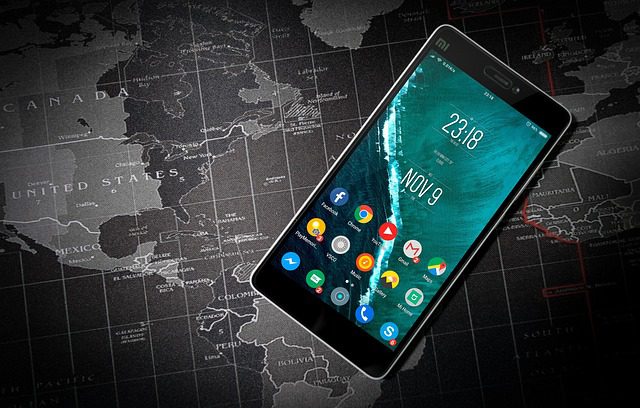Top 5 Apps That Drain Phone Battery Fast 2025 | Battery Killers
Find out which apps drain your phone battery fastest in 2025. Also Learn to identify battery killers and protect your smartphone’s power life.
let me tell you a story about my sister when she bought Her brand-new smartphone, purchased just three months ago, which was dying by 2 PM despite starting each day with a full charge. “I’m barely using it for anything heavy,” she would complained to her colleagues during lunch break. “Just normal social media and work apps.”
What she didn’t realize was that five specific applications on her device were silently draining her battery throughout the day, working in the background even when she wasn’t actively using them.
Her story isn’t unique – millions of smartphone users worldwide experience premature battery drain without understanding the underlying causes.
Google, Facebook and Messenger are the three three apps that drain battery the most. YouTube, Uber, and Gmail also use a lot of battery. Understanding which applications consume the most power enables users to make informed decisions about app usage and implement effective battery conservation strategies.
The modern smartphone ecosystem includes thousands of applications, each designed to provide specific functionality and convenience.
However, many of these apps continue operating in the background, checking for updates, sending notifications, and maintaining active connections that steadily drain battery power throughout the day.
Understanding Battery Drain in Modern Smartphones
Battery drain occurs through various mechanisms that most users never consider during normal device operation. Every smartphone function – from maintaining network connections to processing background tasks – requires electrical power that depletes your battery’s stored energy.
Applications drain battery through multiple pathways: active screen usage, background processing, network connectivity, location services, push notifications, and hardware acceleration. Understanding these mechanisms helps identify why certain apps consume significantly more power than others.
>>Top 10 Android Phones with the Best Battery in 2025
Modern Android and iOS operating systems include sophisticated power management features designed to minimize unnecessary battery consumption. However, many applications bypass these restrictions or require constant connectivity that negates built-in optimization efforts.
The cumulative effect of multiple battery-draining applications can reduce device battery life from 12-16 hours down to 6-8 hours or less. This dramatic reduction forces users into inconvenient charging cycles that disrupt productivity and daily routines.
>>How to Insure Your Smartphone in Nigeria
The Top 5 Battery-Draining Apps in 2025

1. Facebook (Including Facebook Lite)
Facebook remains the undisputed champion of battery consumption across both Android and iOS platforms. The application’s aggressive background refresh policies, constant location tracking, and multimedia-heavy content delivery create a perfect storm of power consumption.
The Facebook app continuously monitors your location, updates your news feed, checks for new messages, processes video content, and maintains active network connections even when you haven’t opened the application for hours. These background processes can consume 15-25% of your total battery capacity daily.
Facebook’s notification system particularly impacts battery life through frequent wake-up calls that activate your device’s processor, screen, and network radios. Each notification, whether for likes, comments, messages, or friend requests, requires system resources that accumulate throughout the day.
The application’s video autoplay feature significantly contributes to battery drain by automatically downloading and playing video content as you scroll through your feed.
Even brief video previews consume substantial processing power and network bandwidth that translates directly into battery consumption.
Facebook’s integration with other applications and services means it often runs background processes related to social sharing, account verification, and cross-platform data synchronization. These hidden processes continue operating regardless of your active usage patterns.

2. TikTok
TikTok’s addictive short-form video format masks one of the most battery-intensive applications available on modern smartphones. The platform’s algorithm-driven content delivery system requires constant video processing, network connectivity, and screen activity that rapidly depletes battery power.
The application preloads multiple videos simultaneously to ensure smooth playback transitions, meaning your device is constantly downloading and processing video content even for videos you never watch. This preloading mechanism can consume significant bandwidth and processing power throughout your usage session.
TikTok’s advanced video effects, filters, and editing capabilities require intensive GPU processing that generates heat and consumes substantial electrical power. Recording videos, applying effects, and even viewing content with complex visual elements taxes your device’s graphics processing capabilities.
The platform’s location-based content recommendations necessitate continuous GPS tracking that prevents your device from entering power-saving modes. This constant location monitoring, combined with frequent network requests for new content, creates sustained battery drain throughout active usage.
TikTok’s notification system includes multiple types of alerts for follows, likes, comments, trending content, and personalized recommendations. Each notification category maintains separate background processes that contribute to overall battery consumption.

3. Instagram
Instagram’s visual-centric platform requires constant image and video processing that places significant demands on smartphone hardware resources. The application’s emphasis on high-quality visual content means every scroll, tap, and interaction involves substantial data processing and network activity.
The Instagram camera integration maintains persistent access to your device’s camera hardware, keeping photo and video capabilities ready for instant content creation. This background camera access prevents full hardware power-down and contributes to sustained battery consumption.
Instagram Stories’ autoplay functionality automatically downloads and displays video content from your connections, often preloading multiple stories simultaneously. This aggressive preloading strategy ensures smooth user experience but significantly impacts battery life through continuous network and processing activity.
The application’s location tagging and discovery features require constant GPS monitoring and geographic data processing. Instagram uses this location information for content recommendations, local business suggestions, and geo-tagged post discovery, all of which maintain active background processes.
Instagram’s integration with Facebook’s advertising network means the application continuously processes user behavior data, demographic information, and interaction patterns for targeted advertising delivery. These analytics processes operate in the background regardless of active usage time.

4. WhatsApp
WhatsApp’s end-to-end encryption technology, while essential for privacy and security, requires continuous cryptographic processing that consumes significant computational resources and battery power. Every message, image, video, and voice note involves encryption and decryption processes that tax device processors.
The application maintains persistent internet connectivity to ensure real-time message delivery and receipt confirmations. This always-on network connection prevents your device from entering deep sleep modes and creates sustained battery drain throughout the day.
WhatsApp’s backup functionality automatically uploads your chat history, media files, and settings to cloud storage services. These backup processes often occur in the background using cellular data or WiFi connections that consume both network resources and battery power.
Group chat participation multiplies WhatsApp’s battery impact through increased message volume, media sharing, and notification frequency. Large group conversations can generate hundreds of messages and notifications daily, each requiring processing power and network activity.
WhatsApp Web and desktop synchronization features maintain active connections between your smartphone and computer applications. This cross-platform synchronization requires constant data exchange that adds to overall battery consumption throughout the day.

5. YouTube
YouTube’s video streaming platform represents one of the most resource-intensive applications available on mobile devices. Video playback requires simultaneous network connectivity, video decoding, audio processing, and display rendering that collectively consume substantial battery power.
The application’s autoplay and recommended video features continuously download video content in the background, often preloading multiple videos to ensure smooth playback transitions. This background downloading occurs even when you’re not actively watching videos.
YouTube’s offline download capability, while convenient for data savings, requires significant processing power during download phases that can rapidly drain battery capacity. Large video files strain both storage management and network processing capabilities.
The platform’s live streaming features maintain real-time network connections that prevent power optimization and require sustained high-performance operation. Live streams particularly impact battery life through constant data processing and network activity.
YouTube’s integration with Google services means the application shares data and maintains connections with Gmail, Google Drive, Google Photos, and other ecosystem applications. These background integrations create additional processing overhead that contributes to battery consumption.
Hidden Battery Drain Culprits
Background App Refresh
Apps like Facebook® and Instagram® can still run in the background, checking for updates, refreshing content, and pushing notifications, even after you’ve closed them—which can drain your phone battery. This background activity continues consuming power resources even when applications aren’t actively displayed on your screen.
Most users incorrectly assume that closing an application completely stops its battery consumption. However, modern smartphones allow applications to maintain background processes for notifications, data synchronization, and content updates that continue operating independently of user interaction.
Background app refresh enables applications to download new content, process updates, and prepare information for immediate availability when you next open the application. While this feature improves user experience through faster load times, it significantly impacts battery life.
Location Services and GPS Tracking
Location-based services represent major battery consumption sources that many users overlook during daily device usage. GPS tracking, cellular tower triangulation, and WiFi network mapping all require active hardware components that consume electrical power continuously.
Many applications request location permissions for functionality that doesn’t obviously require geographic information. Social media platforms, shopping applications, and even seemingly unrelated utilities often include location tracking features that operate in the background.
Precise location services consume significantly more battery power than approximate location tracking. Applications requiring exact GPS coordinates for navigation or location sharing maintain high-accuracy positioning that prevents power-saving location modes.
>> Also get updates on how to insure yur smartphone
Push Notifications and Real-Time Synchronization
Push notification systems maintain persistent network connections that prevent devices from entering deep sleep power states. Each notification service requires active network monitoring that accumulates throughout the day across multiple applications.
Real-time synchronization features in email clients, messaging applications, and social media platforms continuously check for new content and updates. This constant network polling creates sustained battery drain that increases with the number of synchronized accounts and services.
Identifying Battery-Draining Apps on Your Device
Android Battery Usage Analysis
Android devices include comprehensive battery usage statistics accessible through Settings > Battery > Battery Usage. This interface displays detailed power consumption data for each installed application over the past 24 hours, 7 days, or since last full charge.
The battery usage screen shows both foreground and background power consumption, helping identify applications that drain battery even when not actively used. Pay particular attention to applications with high background usage percentages compared to active usage time.
Android’s adaptive battery feature learns your usage patterns and automatically restricts background activity for applications you rarely use. Enable this feature in Settings > Battery > Adaptive Battery to allow intelligent power management based on your personal usage habits.
iOS Battery Health and Usage Monitoring
iOS devices provide battery usage information through Settings > Battery, displaying power consumption percentages for each application over the past 24 hours or 10 days. This interface also shows screen time and background activity for each application.
The Battery Health feature in iOS displays maximum battery capacity and peak performance capability, helping determine whether battery drain issues result from application usage or battery degradation. Healthy batteries should maintain 80% or higher maximum capacity.
iOS Low Power Mode automatically disables background app refresh, reduces visual effects, and limits performance to extend battery life. Enable this feature when battery levels drop below 20% or manually activate it for extended battery conservation.
Effective Strategies to Reduce Battery Drain
Application Management and Optimization
Regularly review installed applications and remove those you no longer use actively. Unused applications often continue operating background processes that consume battery power without providing any benefit to your daily device usage.
Disable automatic app updates over cellular data to prevent unexpected battery drain from large application downloads. Configure automatic updates to occur only when connected to WiFi and charging to minimize impact on battery life and data usage.
Update applications regularly to benefit from battery optimization improvements and bug fixes that reduce power consumption. Developers frequently release updates specifically addressing battery drain issues and improving application efficiency.
Network and Connectivity Optimization
Disable WiFi and Bluetooth when not actively needed, as these radios continuously scan for available connections and maintain active communications that consume battery power. Use airplane mode in areas with poor cellular coverage to prevent battery drain from signal searching.
Use WiFi connections when available instead of cellular data, as WiFi radios typically consume less power than cellular modems. However, disable WiFi in areas without known networks to prevent continuous network scanning.
Display and Performance Adjustments
Also, you can set the screen to turn off after a short period of inactivity, such as 15 or 30 seconds. Reducing screen timeout duration prevents unnecessary display power consumption during brief interruptions or distractions.
Lower screen brightness to the minimum comfortable level for your current environment. Display backlights represent major battery consumption sources, and modest brightness reductions can significantly extend battery life without impacting usability.
Disable adaptive brightness features that automatically adjust screen brightness based on ambient light conditions. While convenient, these features require continuous light sensor monitoring and frequent brightness adjustments that consume additional power.
Advanced Battery Conservation Techniques
Custom Power Management Profiles
Create custom power management profiles for different usage scenarios like work, entertainment, travel, and sleep. These profiles can automatically adjust application permissions, network settings, and performance parameters based on your current needs and activities.
Many Android devices include manufacturer-specific battery optimization features beyond standard Android power management. Samsung, Huawei, and other manufacturers provide additional tools for restricting background activity and optimizing power consumption.
Schedule automatic power-saving mode activation during specific times when you typically don’t use your device actively, such as overnight hours or during work meetings. Automated power management reduces battery consumption without requiring manual intervention.
Hardware-Level Optimization
Disable unnecessary hardware features like NFC, wireless charging detection, and dual-SIM functionality when not required for your daily usage. These hardware components consume standby power even when not actively used for specific functions.
Use wired charging instead of wireless charging when possible, as wireless charging systems are less efficient and generate more heat during charging cycles. Excessive heat during charging can degrade battery capacity over time.
Avoid extreme temperature conditions that accelerate battery degradation and reduce charging efficiency. Keep devices between 16-22°C (60-72°F) when possible and avoid leaving them in hot cars or direct sunlight for extended periods.
When Battery Drain Indicates Hardware Problems
Recognizing Battery Health Issues
Sudden changes in battery performance, such as rapid drain or unexpected shutdowns, may indicate battery degradation rather than application-related issues. Battery capacity naturally decreases over time, but dramatic changes warrant professional evaluation.
Devices older than 2-3 years may experience significant battery capacity reduction that requires battery replacement for optimal performance. Check battery health through device settings or manufacturer diagnostic tools to assess current capacity.
Physical battery swelling, unusual heat generation, or charging irregularities indicate potential safety hazards that require immediate professional attention. Never attempt to use devices with visibly swollen or damaged batteries.
Software vs. Hardware Diagnosis
Perform factory reset procedures to eliminate software-related battery drain causes when optimization techniques fail to improve battery performance. Backup important data before resetting and reinstall applications gradually to identify problematic software.
Test battery performance in safe mode, which disables third-party applications and runs only essential system processes. Significantly improved battery life in safe mode indicates third-party application issues rather than hardware problems.
Compare battery performance with similar devices of the same model and age to determine whether your battery drain represents normal degradation or exceptional issues requiring professional diagnosis and potential repair.
Understanding which applications drain your smartphone battery empowers you to make informed decisions about daily device usage and optimization strategies. While completely avoiding battery-intensive applications isn’t practical for most users, implementing targeted management techniques can significantly extend your device’s daily battery life.
The key to effective battery management lies in balancing functionality with power conservation, selectively restricting problematic applications while maintaining access to essential features and services. Regular monitoring and adjustment of these settings ensures optimal battery performance as your usage patterns and application portfolio evolve over time.
Remember that battery optimization is an ongoing process rather than a one-time configuration.
Stay informed about new battery-saving features in operating system updates, monitor your usage patterns for changes, and adjust settings accordingly to maintain optimal battery performance throughout your device’s lifespan.



